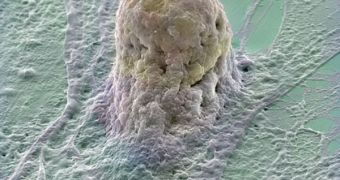Scientists may soon be able to harness the full healing power of regenerative medicine, after discovering the mechanisms through which the body attempts to repair itself after it has been deprived of its oxygen source, as in, after a serious injury or during a heart attack. The cells send out "distress" signals, meant at alerting the reconstructive molecules that a new set of blood vessels is needed.
Circulating stem cells (EPCs) are bodies that circulate freely through the blood stream, and their main role is to produce all the elements the blood is composed of. They are "born" in the bone marrow during the adult life. In case of an injury, when the oxygen supply to the affected place is dwindling, these bodies try to re-establish supply by constructing new blood vessels. Unfortunately, this process takes time and a heart attack doesn't take too much to kill someone.
A team of researchers from the Bristol University has uncovered that kinin, previous thought to be an inflammatory substance, is actually a key element in supporting the growth of new blood vessels. When EPCs detect this substance originating from a specific tissue, they head towards that area and invade it, in hope of repairing or restoring blood flow.
The main obstacles that prevent EPCs from reaching their targets and fixing the problem are other cells that bundle up and slow the movement of the stem cells. This was painfully obvious in the case of patients who were having strokes, when the repair cells had too little time to reach the pericardium and attempt to fix the damage.
"The team have made fascinating discoveries about our DIY repair systems and have translated them into practical use. They've intelligently employed the body's own strategies to develop a method that may take us a step closer to truly effective stem cell therapies for heart patients," concluded Professor Jeremy Pearson, who is also an associate medical director of the British Heart Foundation.

 14 DAY TRIAL //
14 DAY TRIAL //